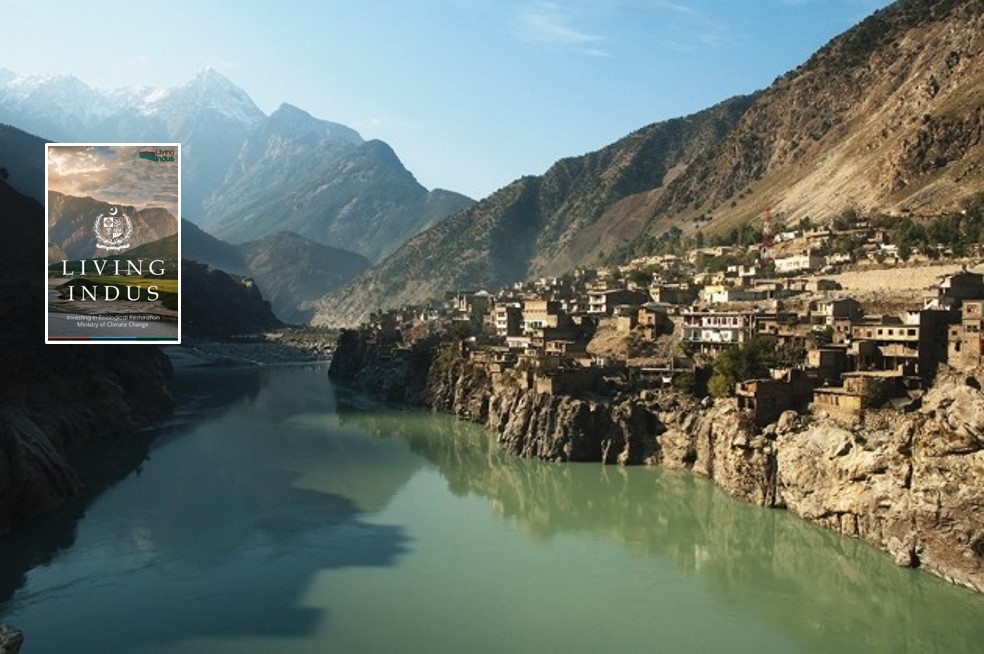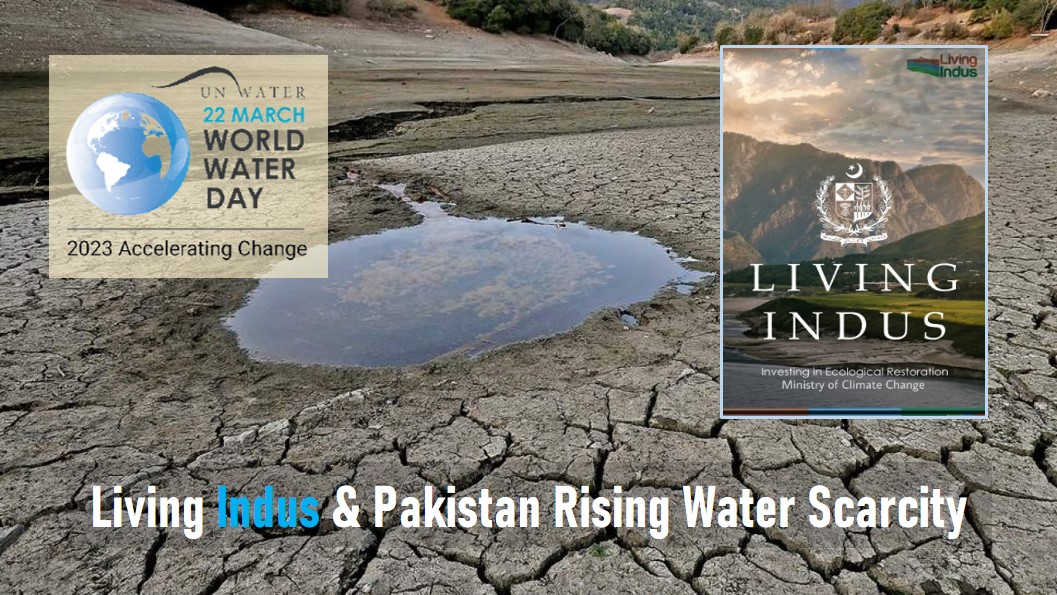The March 22 is celebrated as the World Water Day. However on this day in 2023, Pakistan is facing a severe water crisis due to several reasons such as population growth, urbanization, mismanagement of water resources, climate change, and inadequate infrastructure for water storage and distribution. According to the Pakistan Council of Research in Water Resources (PCRWR), the country is on the verge of becoming a water-stressed country as the annual per capita water availability has decreased from 5,600 cubic meters in 1947 to less than 1,000 cubic meters in 2021. The major sources of water in Pakistan are the Indus River System and its tributaries, groundwater, and rainfall. However, the Indus River System is facing serious threats due to increasing water demand, inefficient irrigation practices, and pollution.
Living Indus Initiatives
Federal Ministry of Climate Change unveiled last year a plan to revive Indus natural routes “Living Indus Initiatives” to “find ways to revive natural routes of Indus River”. The Indus River has served as the vibrant core of the social and economic life of this region for well over a documented 5,000 years. But, today, one is forced to wonder if it will be able to do so even for another 100 years. The Indus and its ecosystems are under pressure from the seemingly inexorable changing climate, temperature fluctuations, disruption of rainfall patterns, and we are still only at an early stage of efforts to adapt to and mitigate these effects. The impact of water scarcity in Pakistan is significant, with adverse effects on agriculture, industry, health, and the environment.
Indus River & Pakistan Agriculture
The agriculture sector, which is the backbone of Pakistan’s economy, heavily depends on irrigation, and any disruption in water supply can result in reduced crop yields and food insecurity. The Indus is the backbone of Pakistan’ agricultural economy. Pakistan already loses an average of 4% of GDP due to water-related economic impacts – inadequate water supply and sanitation, flood damages and water scarcity in agriculture. Degradation of the Indus Delta has been estimated to cost over US$ 2 billion annually because of foregone ecosystem services. Around half is agricultural loss caused by waterlogging and salinity, and half is loss of Delta ecosystem services (including from mangrove forests and fisheries). It is estimated that with the rise of average temperature (0.5 to 2 Degree Celsius), agricultural productivity could decrease by around 8%–10% by 2040.

Climate change is expected to cause degradation of pastures and grazing lands owing to drought, floods, and a rise in temperature and, ultimately, loss of land productivity, decrease in fodder quality and quantity, and increase in disease epidemics. The lack of water leads to soil erosion, which can cause desertification and the loss of fertile land. It can also cause landslides and rock falls, which can damage infrastructure and cause environmental hazards. The lack of access to safe drinking water and sanitation also contributes to various health problems, especially in rural areas.
Indus Basin & Industrial Sector
Similarly, the industrial sector of Pakistan requires water for various processes, and the shortage of water can lead to reduced productivity and job losses. Pakistan treats less than 1% of wastewater in the Indus Basin, very far from the SDG goal of being able to treat 50% of the wastewater generated. This directly affects the health, environmental flow and sustainability of the Indus River system, and the human, terrestrial and aquatic life it supports
Environment Degradation
Water is always working, reorganizing the land. However, Indus water scarcity leads to the deterioration of ecosystems and the loss of biodiversity. Wetlands, lakes, and rivers have dried up, resulting in the loss of important habitats for many species. This, in turn, leads to a decline in the number of species, which can have ripple effects throughout the food chain. Similarly, the groundwater resources are being depleted at an alarming rate due to overexploitation and lack of regulation. Furthermore, the changing climate patterns have also affected the water availability and quality, with increased frequency and intensity of droughts and floods.
Economic Loss
According to the report “Living Indus”, prepared by Federal Ministry of Climate Change and UNO, the economic cost to Pakistan of poor water resource management, even without accounting for climate change, “is estimated to be USD 12 billion per annum (4% of GDP), and of that degradation of the Indus Delta another USD 2 billion. Both numbers may be underestimates given the unavailability of robust ecological and social costs”. A healthy Indus would need to address the balance between the sometimes-competing needs for water quality, water quantity and Basin ecology.
By
Editorial, Infocus


